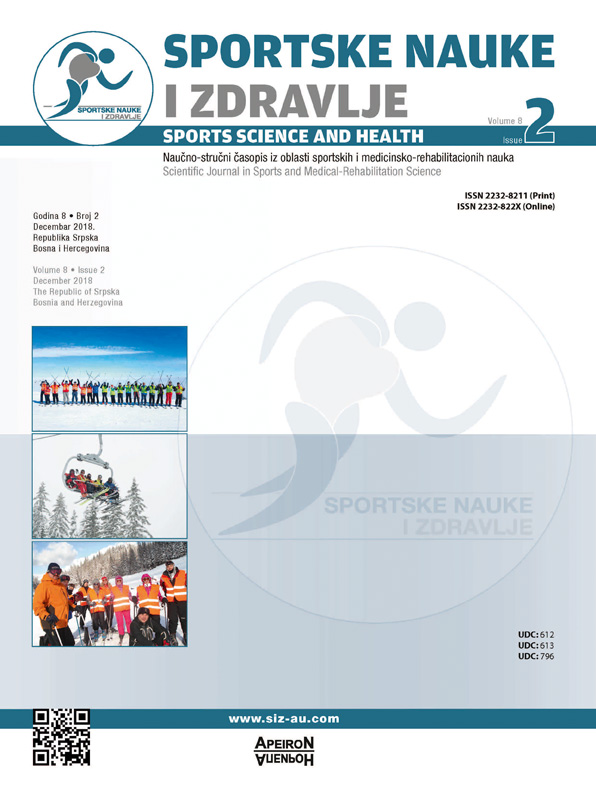The Relationship Between Self-Confidence and Performance of Gymnastic Elements // Povezanost samopouzdanja i uspješnosti izvođenja gimnastičkih elemenata
DOI:
https://doi.org/10.7251/SSH1802183MAbstract
The aim of this research was to establish a relation between self-confidence and self-concept, on the one hand, and the performance of the apparatus elements and the floor routine, on the other. The research included 29 subjects, aged 20 to 27, with the average age of the subjects being 21 years old (M= 21.16, SD= 1.54). The following measurement instruments were used: RSES (Rosenberg Self-Esteem Scale) and SC-6, as well as the evaluation of the performance of the floor exercises (side-to-side and front-to-back cartwheel, roundoff, front and back handspring, forward and backward flip) and a vault (squat through on the vault and straddle vault with pre-flight, front handspring on vault, roundoff vault) and with the apparatus: the high bar (uprise on bars with legs together, kip, front mill circle, back circle, underswing dismount) and the parallel bars (swing, forward roll, back roll, shoulder stand, front toss dismount, back toss dismount) by a three-member committee. The results showed that Rosenberg’s confidence scale produced statistically significant correlations with all the remaining subscales of moderate or high intensity, and the highest one with the scale of the self-concept (rs= .73), while the lowest one with the scale related to the performance of gymnastic elements on the apparatus (rs = .45) (Cohen, 1988 according to Cumming, 2012). In contrast to this scale, the scale of the self-concept is in statistically significant correlation with the gymnastic elements (rs = .61) on the floor and the vault, while the statistically significant correlation of this scale is missing with the gymnastic elements on the apparatus. It can be concluded that a high level of confidence in one’s own abilities through the entire training period enabled a better access to learning, repetition and, finally, the demonstration of the selected gymnastics elements, while the level of general satisfaction was not a decisive factor in the process.Downloads
Published
2019-01-10
Issue
Section
Чланци
